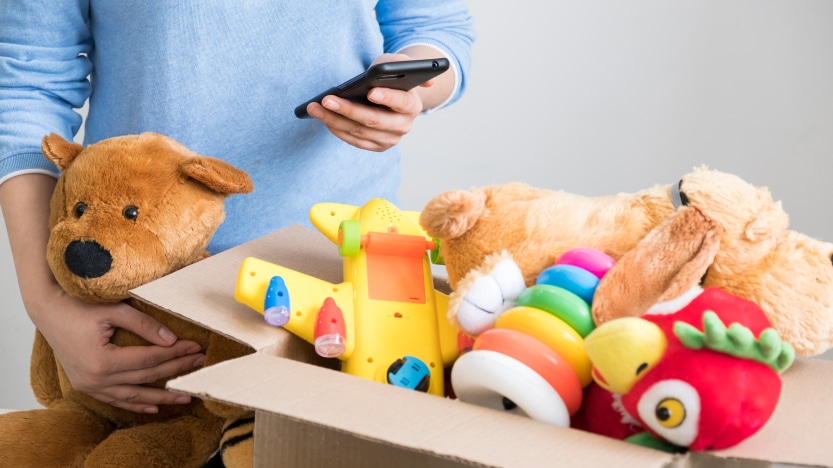The market for children’s items and toys is not confined by borders in an increasingly globalized world. The demand for high-quality and unique toys in China has surged, presenting a lucrative opportunity for U.S. manufacturers and retailers. However, navigating the complexities of international shipping to China, especially to a market as regulated as China, can be daunting.
In this article, we will simplify the process, offering a comprehensive A to Z overview of shipping children’s items and toys from the USA to China. From understanding market demands to navigating customs regulations, this guide will equip you with the knowledge needed to successfully enter the Chinese market.
Understanding the Chinese Market
China’s market for children’s items and toys is vast and varied, driven by a growing middle class and increased spending on children’s education and entertainment. However, cultural preferences and regulatory requirements significantly influence product selection and market entry strategy.
For instance, educational toys and those that promote STEM skills are highly sought after, reflecting the Chinese parents’ focus on educational value. Additionally, understanding China’s strict safety and quality standards is crucial for any business looking to enter this market.
Regulations and Legal Requirements
Navigating China’s stringent regulatory landscape is paramount for businesses aiming to ship children’s items and toys from the USA. The cornerstone of compliance lies in adhering to China’s national safety standards, which are among the most rigorous globally. Central to this compliance is obtaining the China Compulsory Certification (CCC), a mandatory safety mark for many products sold within China.
This certification process scrutinizes products to ensure they meet the requisite safety and quality standards, encompassing everything from the design and production phases to the final product testing. Additionally, understanding and protecting intellectual property rights (IPR) in China is crucial. The country’s IPR landscape has evolved, with the government implementing stricter measures against counterfeiting and infringement.
Foreign businesses must register their trademarks and patents with Chinese authorities to safeguard their brands effectively. This dual focus on compliance with safety standards and the protection of intellectual property forms the bedrock of a successful entry into the Chinese toy market, ensuring that products are not only safe for consumers but also protected against counterfeiters.
Choosing the Right Shipping Method
Deciding on the optimal shipping method to China involves a strategic assessment of shipping cost, speed, and reliability factors. Air freight stands out for its speed, making it ideal for time-sensitive shipments, albeit at a premium cost.
It’s particularly suited for high-value, low-volume products where delivery speed outweighs cost considerations. On the other hand, sea freight offers a cost-effective solution for bulk shipments, benefiting from lower rates but longer transit times.
This method is favorable for large volumes of toys and children’s items, where the cost savings significantly impact the overall budget. Courier services bridge the gap between air and sea freight, offering faster delivery times than sea freight with a higher cost efficiency than air freight.
This option is well-suited for medium-sized shipments that require a balance between speed and cost. The choice among these shipping methods hinges on the specific needs of the shipment, including size, budget constraints, and required delivery timelines. Businesses must weigh these factors carefully to select the most appropriate shipping method that aligns with their operational objectives and market demands.
Packaging and Labeling Requirements
Effective packaging and labeling are critical components of shipping children’s items and toys to China, serving dual purposes of product protection and regulatory compliance. Packaging must be robust and secure, designed to protect the contents from the rigors of international transit, including impacts, vibrations, and pressure changes.
This involves using durable materials and thoughtful packing techniques to minimize the risk of damage. Labeling, on the other hand, must adhere to specific Chinese regulations, providing clear and accurate information in Chinese. This includes the product name, country of origin, manufacturer details, and any safety warnings or instructions pertinent to the product’s use.
Labels should also comply with China’s standards for toy safety, indicating age appropriateness and any potential hazards. This meticulous approach to packaging and labeling not only ensures that products arrive safely and intact but also facilitates smoother customs clearance by complying with Chinese regulatory requirements, thereby avoiding delays and potential fines.
Calculating Costs and Tariffs
Understanding the comprehensive costs associated with shipping toys to China is crucial for businesses to ensure profitability and compliance. Beyond the basic freight charges, importers must navigate a complex landscape of tariffs, taxes, and additional fees.
Tariffs and taxes are determined based on the Harmonized System (HS) code of the product, with rates varying significantly across different categories of toys and children’s items. These costs can substantially affect the landed cost of goods, making accurate calculation and planning essential.
Additionally, importers should be prepared for potential extra charges that might arise during the customs clearance process, including warehousing fees, inspection fees, and any penalties for non-compliance. Staying informed about the latest tariff rates and regulations, as well as engaging with experienced logistics providers or customs brokers, can help businesses efficiently manage these costs.
By accurately calculating and anticipating these expenses, companies can make informed decisions about pricing, shipping methods, and market entry strategies, ensuring a successful and profitable venture into the Chinese market.
Customs Clearance Process
Navigating the customs clearance process in China requires thorough preparation and understanding of Chinese customs policies. All documents must be accurately filled out and submitted in a timely manner to avoid delays. Common issues include incorrect classification of goods or inadequate documentation, which can lead to hold-ups or additional inspections.
Logistics and Distribution within China
Once your products have cleared customs, efficient distribution within China is key to success. China’s logistics infrastructure is highly developed, with numerous options for domestic distribution. Partnering with a local logistics company can streamline this process, ensuring that your products reach your customers promptly and in good condition.
E-commerce Platforms and Sales Channels
The Chinese e-commerce landscape offers a dynamic platform for selling imported toys. Platforms like Tmall Global, JD.com, and WeChat provide access to a vast consumer base. Success on these platforms requires not only understanding the unique features of each but also developing targeted marketing strategies that resonate with Chinese consumers.
Providing after-sales service from abroad poses challenges, particularly in handling returns and exchanges for international shipments. Establishing clear policies and partnering with local services can help manage these aspects efficiently, enhancing customer satisfaction and loyalty.
Final Words
Entering the Chinese market for children’s items and toys is a challenging but rewarding venture. By understanding the market, complying with regulations, choosing the right shipping and distribution methods, and leveraging e-commerce platforms, U.S. businesses can successfully expand their reach to Chinese consumers. With careful planning and execution, the opportunities in China are vast and waiting to be explored.
FAQs
Can I ship used toys to China from the USA?
Shipping used toys to China is heavily regulated and often discouraged due to strict safety and hygiene standards. It’s advisable to focus on new items to ensure compliance and ease of entry.
Are there any seasonal restrictions on shipping toys to China?
While there are no specific seasonal restrictions, shipping during Chinese New Year can cause delays. Planning shipments outside of major holidays is recommended to ensure timely delivery.
Is English labeling allowed for toys shipped to China?
All toys must include labeling in Chinese. English can be included as supplementary information, but the primary details must be in Chinese to comply with regulations.
Can I ship toys directly to customers in China?
Yes, direct shipping to customers in China is possible through courier services, but it’s essential to understand the tax implications and ensure compliance with Chinese import regulations.
Do I need a Chinese partner to sell toys in China?
While not strictly required, having a local partner can simplify navigation of regulatory landscapes, customs clearance, and distribution, especially for businesses new to the Chinese market.
What happens if my shipment fails customs inspection?
Shipments failing customs inspection may be subject to additional scrutiny, fines, or even rejection. It’s critical to ensure all items comply with Chinese standards and regulations before shipping.
How do I determine the HS code for my toy products?
HS codes can be determined by referencing the Harmonized System, consulting with a customs broker, or using online tools provided by trade authorities to ensure accurate classification and tariff application.
Are there any special considerations for shipping electronic toys?
Electronic toys require additional certifications for battery safety and electromagnetic compatibility. Ensure these items meet China’s specific standards to avoid customs issues.
How can I minimize the risk of intellectual property theft?
Register your intellectual property in China, use nondisclosure agreements with partners, and monitor the market for counterfeit goods to protect your brand and products from IP theft.

I’m Tammy Waller, a supply chain and logistics specialist with over 10 years of expertise. I’ve been an author and SFL employee for over 10 years.
As an author, I’ve been able to teach others. I love guiding users through supply chain and logistics operations.
I have substantial experience managing logistics operations, supply chain management, transportation, inventory management, and warehousing in shipping-moving and logistic services. I’ve worked on many worldwide logistics and supply chain projects, honing my abilities in negotiating rates, scheduling shipments, and managing vendors.



